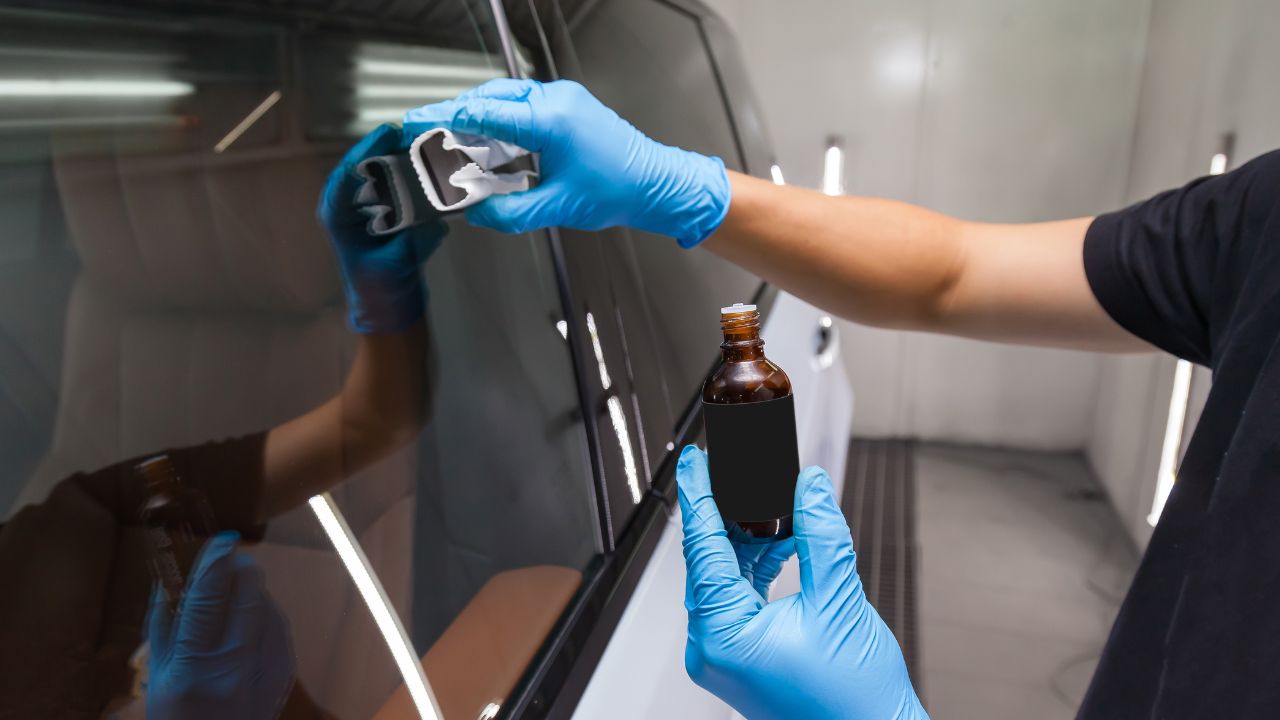High-temperature ceramic glass coatings offer a robust solution for protecting a variety of surfaces exposed to extreme heat. Their use creates a robust, heat-resistant barrier that efficiently protects underlying materials from thermal damage, chemical impacts, and corrosion. Due to their specialized composition, high-temperature ceramic glass coatings can endure extreme thermal fluctuations and harsh conditions.
This article provides a detailed, step-by-step guide to applying high temperature glass coating, ensuring optimal performance and longevity of the protective layer.
Step-By-Step Guide To Applying High-Temperature Ceramic Glass Coating
Initial Preparation
The preparation of the surface before applying the main coating is necessary; if not possible then it can hugely affect the coating and the duration it will last. It is essential to ensure that the entire surface is clean of oil, rust, and any other depilatory substance, and it is important to ensure the coating is correctly attached to the surface. Entirely dedicated to the application techniques, which, in case the area of coverage is vast, can be enhanced through various methods, including sandblasting, wire brushing, or grinding to increase the bonding between the surface and the coating even further. These preparations are also used to clean the surface and give a roughness that significantly benefits the formation of mechanical interlocking between the coating and the substrate.
Preparing the Coating
Achieving the right consistency in the ceramic glass paint is vital for a smooth application process. Given the diverse densities of materials within the paint, thorough stirring is essential. If spraying the coating, adjust its viscosity by diluting it with 5-10% deionized water, depending on the requirements of the spraying equipment and the desired thickness of the application. Performing a trial run on a smaller scale can help fine-tune the application method and ensure consistency.
Application Method
The ceramic glass coating can be applied using either screen printing or spraying techniques. Each method requires a tailored approach to ensure even coverage and optimal thickness. After applying, allowing the coating to air-dry at room temperature is necessary. To facilitate the drying process without compromising the coat's integrity, a controlled, low-temperature bake below 80°C is recommended. This cautious approach prevents the formation of blisters that high temperatures on wet films can cause.
Curing and Sintering
Following the air-drying of the coating, the next procedure entails thoroughly solidifying the paint by heating it. The heating should ideally be set between 200°C to 280°C. The time needed for this process may range from 10 to 60 minutes, depending on the paint's thickness and its unique mixture. A common heating protocol suggests either 220°C for 30 minutes or 280°C for a shorter span of 10 minutes. Subsequently, the coating is subjected to a further sintering technique to intensify the ceramic glass layer's bond and resilience. This involves slowly elevating the temperature to a spectrum of 500°C to 800°C, maintaining this heat for a period of 10-30 minutes. The exact parameters during this phase depend on the nature of the glass powders used, with lower melting powders typically requiring a temperature of 600°C for 30 minutes and higher melting ones at 750°C for 10 minutes.
Post-Application Maintenance
Maintenance of the tools and other materials used in the application is also highly recommended. Make sure that the container you use to hold paint is covered as soon as you are done using it because paint tends to set and form skin, which is unsuitable for subsequent applications. To be more precise, one has to ensure that the cleaning of any spray guns, brushes, and other equipment with water is done immediately to prevent the residue from solidifying and blocking the equipment for subsequent use.
Some Applications of High-Temperature Ceramic Glass Coating
High-temperature ceramic glass coatings play an indispensable role across multiple sectors, attributed to their exceptional ability to withstand severe heat and corrosion. Here are some summarized points on their diverse applications:
- Automotive: It protects engine components like exhaust systems from heat and corrosion, enhances heat efficiency, and benefits overall vehicle performance.
- Aerospace: Shields spacecraft from extreme thermal variations and cosmic radiation. It Increases the durability of jet engine components against high temperatures.
- Industrial: Improves efficiency and longevity of furnaces and boilers. It offers corrosion resistance to machinery, extending its operational life.
- Energy: Applied on turbine blades to reduce wear from heat and erosion. It enhances the safety and performance of nuclear reactors by protecting structural components.
- Consumer Products: Used in cookware for non-stick properties and ease of cleaning. It protects electronics like circuit boards by improving heat dissipation.
Key Takeaway
In wrapping up, the methodology surrounding the application of high-temperature ceramic glass coatings is a testament to modern engineering feats, tirelessly working to bolster the resilience, functionality, and longevity of various materials under severe stress. This groundbreaking approach, crucial in sectors ranging from automotive to aerospace and even in everyday consumer goods, drastically extends the service life of components. It represents a pivotal stride in the development of material sciences, setting a new benchmark in our quest for solutions that endure extreme conditions, thus catalyzing advancements across numerous fields.

